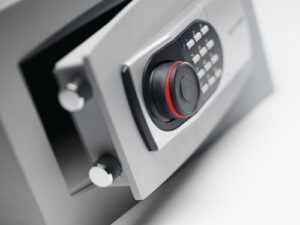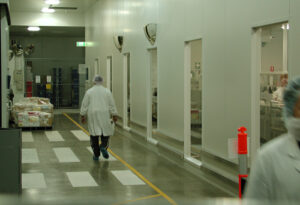 Advice for upgrading security during refurbishment projects from Jeremy Cassady, Managing Director, Securikey
Advice for upgrading security during refurbishment projects from Jeremy Cassady, Managing Director, Securikey
Sourcing and installing effective security equipment is always an important consideration within commercial buildings. Even when appropriate measures are in place, security risks will often need to be reassessed and expanded as a result of any refurbishment work, especially if the building is being extended or new access points are installed. Businesses and organisations are also under pressure to keep costs low while still meeting all relevant health and safety requirements.
Thankfully there is a range of low cost safety and security solutions available that are designed to meet any requirement, ensuring that the refurbishment budget does not have to be stretched to ensure a safe environment is maintained.
Convenience without compromise
Access control is one of the primary security concerns in many commercial buildings, particularly applications such as student accommodation, hospitals and educational buildings which have a high number and turnover of traffic. Business owners or facilities managers usually want to implement a more streamlined way of maintaining lock security, as inconvenient or time-consuming security measures can lead to their being used intermittently by building users or, in the worst case scenario, disregarded altogether.
A master key system can provide a very practical and user-friendly solution, as well as being easy to schedule as part of planned building refurbishment works. This type of system allows key holders to access both the main door of a building and other interior doors using the same key, offering maximum convenience by eradicating the need for excessive quantities of keys to be carried around or stored safely. Master key systems are ideal for a wide range of commercial properties, from offices to commercial buildings, retail stores, hotels, and student accommodation, and can be easily planned for installation where doors or locks are being fitted or replaced, or even on all existing doors where compatible to further reduce costs. As long as doors feature the euro profile cylinder key lock, the capability to switch to a master key system is set up even if only required at a later stage. Leading suppliers expand the possibilities still further by offering a ‘one key’ option that not only works on doors but can also be used to access key cabinet ranges, cash safes, high security post boxes and emergency key holding boxes, which can be located around the building.
Access without a key
For applications where the allocation of keys or cards is unpractical due to the volume of people entering and exiting the building, digital door locks are widely used because they provide a low cost, easy to install access control solution. As with the ‘one key’ euro profile cylinder, digital door locks can be installed on new or existing doors as part of an ongoing refurbishment project. As they require no additional hardware and are completely self-contained, they are quick and easy to fit as well as being ideally suited for retrofit on a small budget.
When undergoing building upgrades, building owners want to know that the work being carried out will last in order to justify any expenditure. This longevity extends to the requirement that any products installed be adaptable to meet changing needs within the building. As digital door locks offer a simple solution compared to ‘high tech’ electronic access control options, such as biometric fingerprint readers, there is little that can go wrong and consequently digital door locks purchased from a reputable supplier can last for many years. In addition, once installed, they can be reprogrammed at any time so security can be instantly reinstated if compromised or if there is a changeover in staff. In student accommodation or educational buildings, for example, where turnover is high, digital locks make it easy to change the password and maintain security without the need to change locks or keys. There are a variety of digital door lock models to choose from depending on the level of security required. Again, consulting with an experienced locksmith will help customers select the most suitable product for their particular specification.
Electronic upgrades
When updating security measures in conjunction with new building works, safes should not be overlooked. Upgrading a safe does not necessarily mean that existing models will need to be replaced with new versions, however, as few businesses or organisations will spare the budget for this unless the existing safe was faulty or the requirement arose for additional safe space.
An easy and low cost solution for customers with adequate safe space but who are looking to move to a ‘no key’ system in order to monitor safe use more closely is to upgrade existing key locks with an electronic alternative. One of the main advantages offered by many types of electronic lock is that they allow for multiple user codes as well as providing an audit trail, so use of the safe can be carefully monitored. An electronic safe lock also offers flexibility as the safe combination code can be changed at any time. Unauthorised access is very unlikely as many locks enter lockdown mode after a few failed attempts and are disabled for five minutes before allowing anyone to enter another pin, so security is assured whilst ensuring full accountability by those who are authorised to access the safe.
Depending on the extent of a refurbishment project, areas of a commercial building can change dramatically in terms of space configuration or they can be extended to create new communal spaces. For buildings with a large amount of foot traffic in corridors, such as hospitals and educational buildings, convex mirrors are a popular and inexpensive safety measure to counteract any risks in these areas. Used extensively in a diverse range of environments, these mirrors are highly effective in enhancing safety, security and operational efficiency by improving surveillance and eliminating blind spots, as they have wider fields of view than other reflective surfaces like flat or concave mirrors.
In addition to their common use in healthcare, retail, car parks, road junctions, convex mirrors are often used within manufacturing and warehouse facilities where risk of collision is high due to large numbers of employees and vehicles continually transporting goods and items. According to the latest HSE figures in 2013/2014 there were 13,595 reported injuries to employees and an estimated 74,000 unreported injuries in the manufacturing industry alone. Clear visibility and awareness of one’s surroundings are essential to prevent many injuries and it is important to choose the right convex mirror for a particular job as UK and European legislation requires that certain standards are met in any industry. For example, in the food and drink manufacturing industry, UK and European Law requires that all equipment be easy to clean, corrosion resistant and have imperceptible seams to avoid the risk of trapped organic substances becoming a breeding ground for bacteria. An established supplier will be able to provide valuable information to ensure that the mirror meets all needs for the specific application and complies with all the latest regulations.
Knowledge is key
During any refurbishment project, it is important that facilities managers and others responsible for implementing effective security measures are aware of the choices available so they can minimise any new risks that may arise without adversely affecting their budget. Trusted security equipment manufacturers are well placed to share their expertise at an early design stage, as they can recommend solutions that are inexpensive as well as being compliant with all relevant legislation and the standards that may be required by insurance companies. Advising with an expert in the field is always recommended as it can save time and costs.


